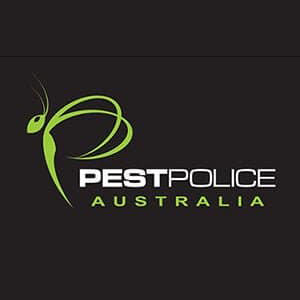Any home’s discovery of cockroach eggs is not pleasant. They indicate that roaches are around, that they are breeding, and that they will quickly grow in number.
If you think you’ve found a cockroach egg, you should identify it, determine the severity of the issue, and, if necessary, take immediate action to eradicate the infestation.
If you’re one of the select few who automatically assume it’s no big problem when they spot a cockroach crawling across the floor or some cockroach eggs in the back of a cabinet, then think again.
Fortunately, most people react to cockroaches with fear and repulsiveness. That instinct is valid because they don’t simply reflect negatively on your home or company, but these pests also:
- Contaminate your food and release bacteria as they do so.
- Reproduce extremely rapidly; each female and her offspring can create dozens or even tens of thousands of new cockroaches.
- Put your brand at risk from the standpoint of your customers and your company in jeopardy from a regulatory perspective, especially if you are in the food and hospitality industry.
- Transmit harmful illnesses like salmonella, listeria, and campylobacter through their faeces and saliva (through cockroach bites).
A cockroach infestation starts with cockroach eggs. Their population will quickly grow as they develop into nymphs or baby roaches. The sooner you locate the eggs and care for them, the quicker you will be protected from these vile pests.
Let’s start with the basics to understand cockroach eggs better.
What Do Cockroach Eggs Look Like?
The fact that so many people are unaware that these filthy little creatures lay roach eggs, as does nearly every female insect on earth, always surprises cockroach pest control specialists. Nevertheless, you won’t be looking for the roach eggs themselves; rather, you’ll most likely see the ootheca, the hard sack that protects the eggs.
The size and colour of the ootheca vary depending on the cockroach species. The egg casings are typically reddish-brown to dark brown and measure 5 to 13 mm, depending on the cockroach species. The ootheca is visible to the naked eye. It won’t be simple to locate them, though, as cockroaches typically hide them well when it’s time to lay eggs. The appearance of the egg casings can assist you in identifying the species of roaches that have invaded your home.
Do Cockroach Eggs Hatch?
Cockroach eggs can hatch in as little as a week. They’re resistant to most insecticides and are hard to get rid of, so if you spot them in your home or business, it’s important to take action immediately.
How do you know if there are cockroach eggs in the area? There are three main ways:
- You see adult cockroaches (1/2 inch long) scurrying around your home or business. The adults lay their eggs near food sources–like dirty dishes–and then go back into hiding until they emerge as nymphs after several weeks. If you see these pests running around on their own legs (instead of flying), it could mean there are young ones nearby, too.
- You notice dark spots on your walls and ceilings. These are likely the dried-up remains of cockroach eggs left behind after hatching. If you spot these, cleaning them off quickly is important so they don’t attract more roaches into your home or business.
- You notice live, crawling roaches. Acting quickly is important when seeing these pests in your home or business. The best way to get rid of cockroaches is by calling a professional pest control service in Melbourne, like Pest Police. We can help you eliminate the problem once and for all.
Where to Look for Cockroach Eggs
Cockroach eggs are tiny, so you’ll need to look carefully. Make sure you check the following areas:
- Kitchen cabinets and drawers
- Bathroom cabinets and drawers (especially under the sink)
- Laundry room cabinets and drawers
- Basement or crawl space areas behind furniture or appliances that humans infrequently use–cockroaches love these places!
- Crawl spaces under your house or apartment building are also a great place to find cockroaches.
Where Do Cockroaches Lay Their Eggs?
Cockroach eggs are typically laid in cracks and crevices. These insects prefer dark places, so they’ll often lay their eggs in areas that are not easily visible. They also prefer warm temperatures, so if you notice a cockroach egg cluster on the side of your refrigerator or stovetop- or even inside- it may be evidence of an infestation nearby.
You can find Cockroach egg clusters in many different locations around your home: under sinks and cabinets, behind electrical outlets, along water pipes, and inside walls (especially near air conditioning units). Cockroaches will lay their eggs almost anywhere as long as there’s food available for them to eat after hatching.
Types of Cockroach Species and Their Eggs
Australian Cockroach
For this species, each egg case may hold 16 to 24 nymphs. The ootheca can grow up to 11mm long and is dark brown. The Australian cockroach deposits its eggs close to food sources in protected parts of your home. The female conceals the egg cases in cracks and small spaces. They are difficult to locate and treat as a result.
American Cockroach
The American roach’s egg sack is reddish or brown. The ootheca typically measures 8 to 10 mm in length. Before releasing the eggs in a secure location, the females carry them for a few days. The babies will not hatch for another two months after being dropped.
Oriental Cockroach
The oriental cockroach’s ootheca is a deep reddish-brown colour. It is 8 to 10 mm in length. There are roughly 16 nymphs inside this roach’s case, which appears slightly swollen. Some species can only exist in warmer climates, significantly impacting their evolution.
Brown-Banded Cockroach
The brown-banded cockroach’s ootheca is light reddish-brown and measures 5 mm long. A female can give birth to up to 20 instances throughout her lifetime. There are 10 to 18 eggs in a case. The two yellow bands that run across the top of their abdomen make them simple to recognise.
German Cockroach
This particular cockroach mates quite fast. This species is the most prevalent one. The ootheca is 7-9mm long and is pale brown or yellow. There may be 20 to 40 eggs within. An adult female can produce up to 30,000 eggs in a single year. The female carries the eggs until they are ready to hatch.
How to Get Rid of Cockroach Eggs?
The best way to get rid of cockroach eggs is to remove them. The eggs are quite small and hard to spot, but if you look closely, you may see them lying on surfaces or crevices. Use a vacuum cleaner to suck up any visible cockroach egg casings, killing the eggs inside. You can also use disinfectant spray or soap and water to clean away any residue from your home’s surfaces so that no more eggs can hatch there later on.
If you’re still worried about an infestation taking hold after removing all visible signs of it (for example, if there are still some hidden spots where roaches could lay their young), then we recommend using an insecticide like Raid Ant & Roach Killer Aerosol Spray. This formula contains pyrethrins–a type of pesticide derived from chrysanthemum flowers–that’s safe and effective at killing insects such as ants while also being non-toxic enough for humans and pets alike.
Do not be afraid of cockroach eggs. You can easily get rid of them by following a few simple measures.
Cockroach eggs are not harmful. They are not a sign of a bad home and are easy to remove. You should not be afraid of them because they do not pose any health risks, but you should take measures to get rid of them as soon as possible.
How to Prevent an Infestation of Cockroach Eggs?
Here are a few things you can do to prevent an infestation of cockroach eggs:
Keep your house clean. The more things there are in the way, the less likely it is for cockroaches to lay their eggs in those places. This means that if you have clutter around, such as boxes or bags of clothes that haven’t been unpacked yet, there’s no place for them to hide their eggs (or themselves). So make sure everything has its proper place before leaving it out, so they don’t have any options left but your mattress!
Keep your house dry! If there’s water around, then roaches will find someplace else where they can live comfortably without worrying about survival conditions like humidity levels being too high or low temperatures causing them problems later on down the road when they hatch into nymphs who need warmth from somewhere else than just their own bodies’ heat production capabilities alone–which isn’t much anyway since most insects aren’t warm-blooded creatures like mammals tend towards being rather than cold-blooded ones like reptiles usually come across as being inside their bodies instead of outside ours’.
Conclusion
While removing a few roach eggs is simple, it is much more difficult to quickly, effectively, and securely get rid of a cockroach infestation. You should rely on us at Pest Police Australia for this since we are the local experts on cockroaches and cockroach eggs in Melbourne.
Our Melbourne pest control experts know all common species, their behaviours, and the precise professional treatment option that will work best in your particular circumstance. Are you ready to bid your resident cockroaches goodbye? Call our friendly staff today for more enquiries on cockroach control in Melbourne.

